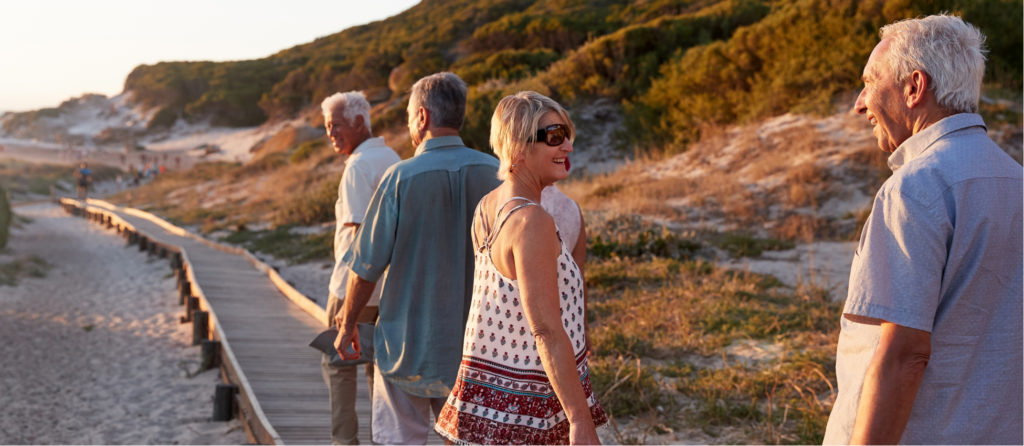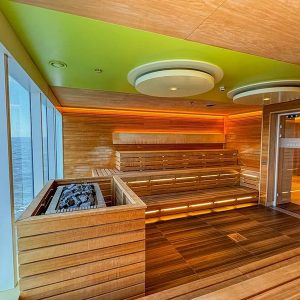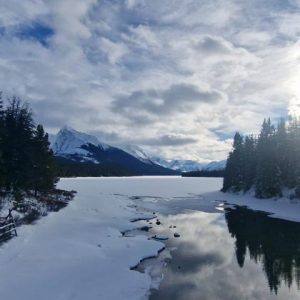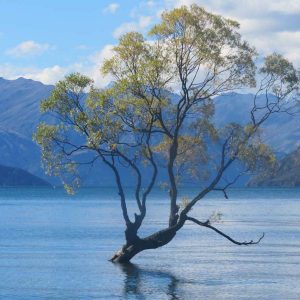Faial, Pico and Terceira
After a couple of delightful days in Sao Miguel, we hopped aboard a propeller plane, ready to enjoy three other islands at the heart of the archipelago.
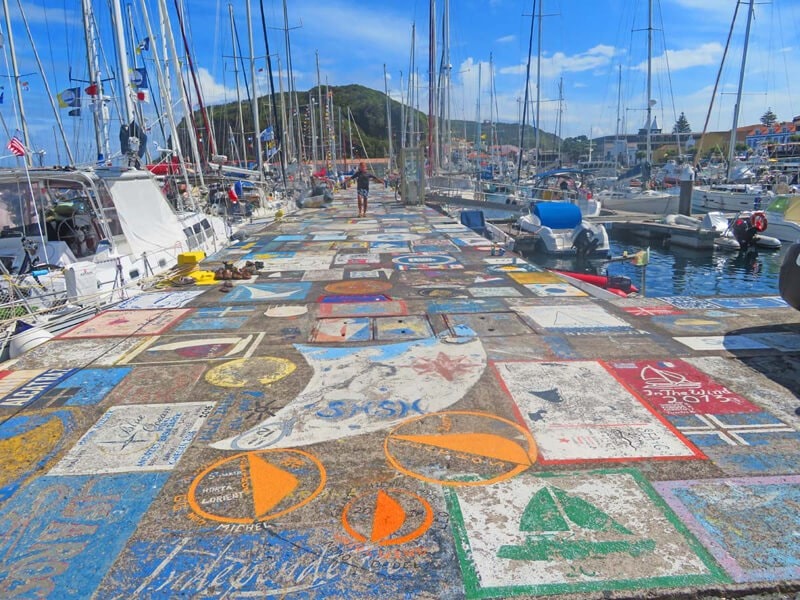 Named ‘Blue Island’ for its wonderful hydrangeas, Faial greeted us with a dramatic coast of volcanic rocks and cliffs and Horta, the quaintest capital I had ever seen. Straight to the harbour and here was our first highlight, ‘street art’ spreading across every terrace and walkway, designed by sailors from around Europe and beyond. It started in 1986, they say, and continues to this day with over 1000 pieces added every year to ensure auspicious journeys. It’s unique, inspiring and most visitors spot a meaningful name or symbol. Add colourful lanes, a cool tamarisk promenade, Peter’s café and its world-famous gin and tonic, sweeping sand, azure water, yachts and fishing boats, what more could you want? Views from the hilltop? Climb up to the white chapel of Senhora da Guia and as you trek to ‘Land’s End’, you look across the ocean on one side- spotting whales in season- and on the other the shimmering twin bays of Horta framed by verdant hills.
Named ‘Blue Island’ for its wonderful hydrangeas, Faial greeted us with a dramatic coast of volcanic rocks and cliffs and Horta, the quaintest capital I had ever seen. Straight to the harbour and here was our first highlight, ‘street art’ spreading across every terrace and walkway, designed by sailors from around Europe and beyond. It started in 1986, they say, and continues to this day with over 1000 pieces added every year to ensure auspicious journeys. It’s unique, inspiring and most visitors spot a meaningful name or symbol. Add colourful lanes, a cool tamarisk promenade, Peter’s café and its world-famous gin and tonic, sweeping sand, azure water, yachts and fishing boats, what more could you want? Views from the hilltop? Climb up to the white chapel of Senhora da Guia and as you trek to ‘Land’s End’, you look across the ocean on one side- spotting whales in season- and on the other the shimmering twin bays of Horta framed by verdant hills.
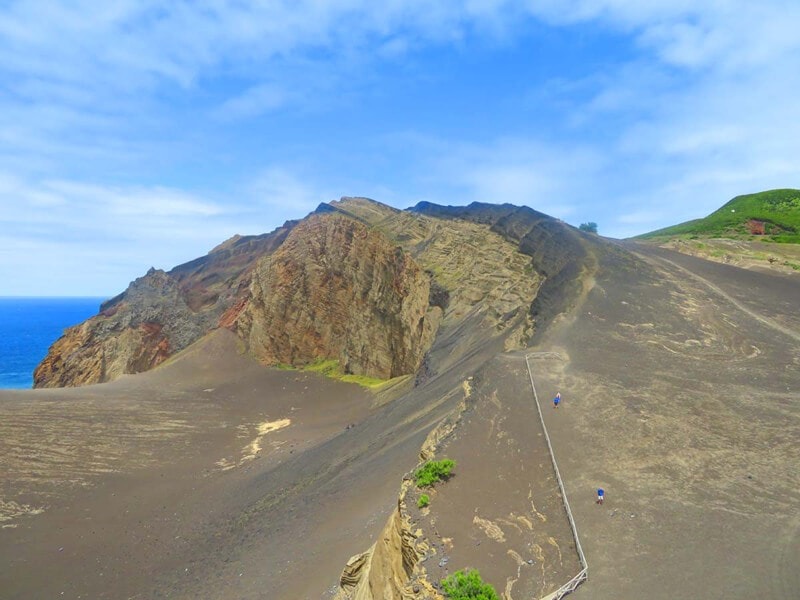 There were more fantastic views from the roadside Church of Conception then we explored the award-winning Botanical Garden in Flamingo Valley and the Capelinhos Nature Park, gazing at the green Caldeira do Faial and its 7 km circular trail sprinkled with wild strawberries and cowslips. We only walked a short way then recovered with a tasty lunch – trigger fish and ‘volcanic ash pudding’- before heading to the mighty volcano which last erupted in the late 50s. This was an awesome place, inviting true adventurers to scramble up the crumbly ridge but an easier option for a bird’s eye view is the top of the lighthouse, up 140 steps.
There were more fantastic views from the roadside Church of Conception then we explored the award-winning Botanical Garden in Flamingo Valley and the Capelinhos Nature Park, gazing at the green Caldeira do Faial and its 7 km circular trail sprinkled with wild strawberries and cowslips. We only walked a short way then recovered with a tasty lunch – trigger fish and ‘volcanic ash pudding’- before heading to the mighty volcano which last erupted in the late 50s. This was an awesome place, inviting true adventurers to scramble up the crumbly ridge but an easier option for a bird’s eye view is the top of the lighthouse, up 140 steps.
Wherever you are in Faial, something draws you gaze across the water: that’s Mount Pico on its namesake island, a short ferry ride from Faial. At 2351 metres, this dormant volcano is the highest peak in Portugal and although the island is the second largest in the Azores, it is scarcely populated (just over 6000 in the capital Madalena) and beautifully pristine, its burgeoning tourism highly praised for green credentials. Whaling has gone but the historical vineyards still produce the Verdelho wine once appreciated by the Russian Court. Protected from the Atlantic breeze by lava rocks and a few dragon trees, this is now a world heritage site where we visited the museum then went up a restored windmill which offered all around views and a chance to buy crochet lace, straw hats and rush mats.
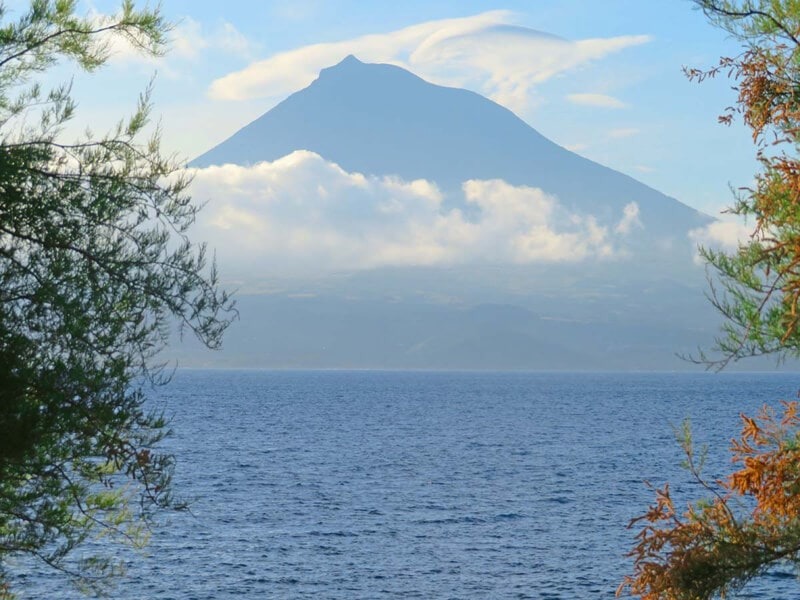 So much lava means the ‘Black Island’ is fertile, lush pastures mingling with maize fields and orchards full of apples, oranges, peaches, plums, figs and more. The coast is volcanic, though we could swim in natural pools, and we marvelled at the ‘rock bridges’ in Cachorro where the sea rushes through lava holes and cavities.
So much lava means the ‘Black Island’ is fertile, lush pastures mingling with maize fields and orchards full of apples, oranges, peaches, plums, figs and more. The coast is volcanic, though we could swim in natural pools, and we marvelled at the ‘rock bridges’ in Cachorro where the sea rushes through lava holes and cavities.
Meanwhile, up in the hills, lakes glistened like silver, or steamed ominously like Capitano, and above it all, Mount Pico played hide and seek in the drifting mist. Signs of activity are still visible and only the brave would venture to the top.
The next day, Pico followed us for a while as we flew to Terceira, the ‘Purple Island ‘ where the sun sets in lilac shades over the vast agricultural land, the rugged cliffs and foaming ocean. Angra, the capital, is the Azores’ oldest city and a world heritage site, rebuilt after the 1980 earthquake with Renaissance buildings and pastel-hued cottages draped in pretty balconies and flowers. The main street is cobbled and steep yet a lovely place to wander around and sip a cool drink on the square. Best of all, I loved the municipal gardens for their water features, artistic pebble patterns and a fabulous panorama from the hilltop pyramid, looking across the town to the peninsula of Mount Brasil lapped by the ocean.
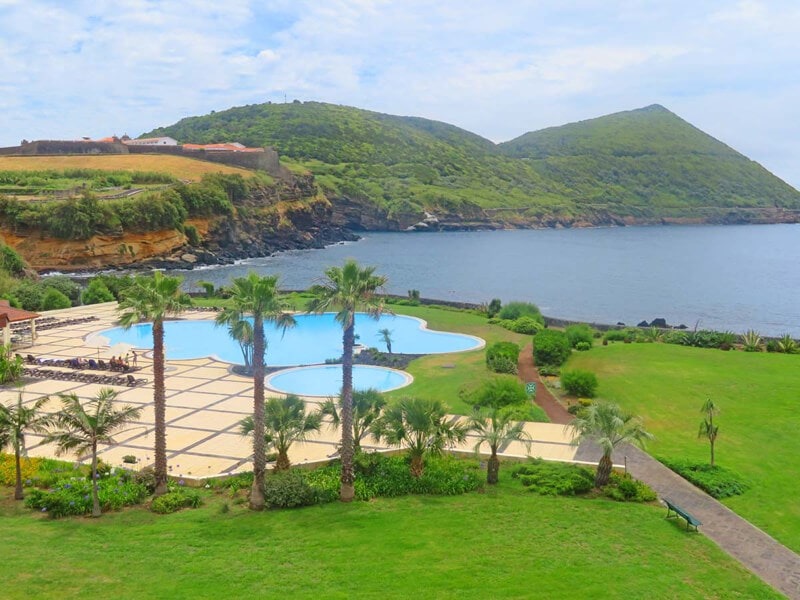 You can drive to the top of Mount Brasil but I preferred to walk to see the views all along the way. Later two of us decided to follow the sign-posted crater rim trail, meandering up and down through the forest, along the cliff top and up deserted peaks that took my breath away. The old fort, the city and its gleaming harbour, the fishing villages, the rocks and islets, the mountains in the distance, it was a dream come true.
You can drive to the top of Mount Brasil but I preferred to walk to see the views all along the way. Later two of us decided to follow the sign-posted crater rim trail, meandering up and down through the forest, along the cliff top and up deserted peaks that took my breath away. The old fort, the city and its gleaming harbour, the fishing villages, the rocks and islets, the mountains in the distance, it was a dream come true.
Other exciting trips included Praia Da Vitoria , an attractive resort on the east coast boasting the longest beach on the island, a mix of volcanic and desert sand, and in the north, the Biscoitos swimming holes carved by lava flows. Driving across the nature reserve, we reached Algar Do Carvao for a spine-chilling descent into an amazing lava tube right inside a volcano.
We caught a glimpse of Santa Barbara, the highest peak at just over 1000 metres, then on our last evening, we were back in town, joining thousands of locals, extended families, young and old, celebrating the festival of St John, with traditional music and dance in the most colourful procession. The perfect end to a perfect holiday.
 More information
More information
Pack comfortable shoes for cobbles and nature trails and if you are keen on challenging treks, a hiking pole will be useful.
The Azores are in mid-Atlantic, nothing detracts from their beauty but be prepared for changeable weather.
Sailing from Faial to Terceira takes about eight hours so if your time is limited, flying is a better option. However, SATA internal flights are expensive, if you do your own booking, but tour operators offer great value for money.
For more information, visit www.visitportugal.com/en/destinos/acores
Silver Travel Advisor recommends Sunvil Active Holidays.
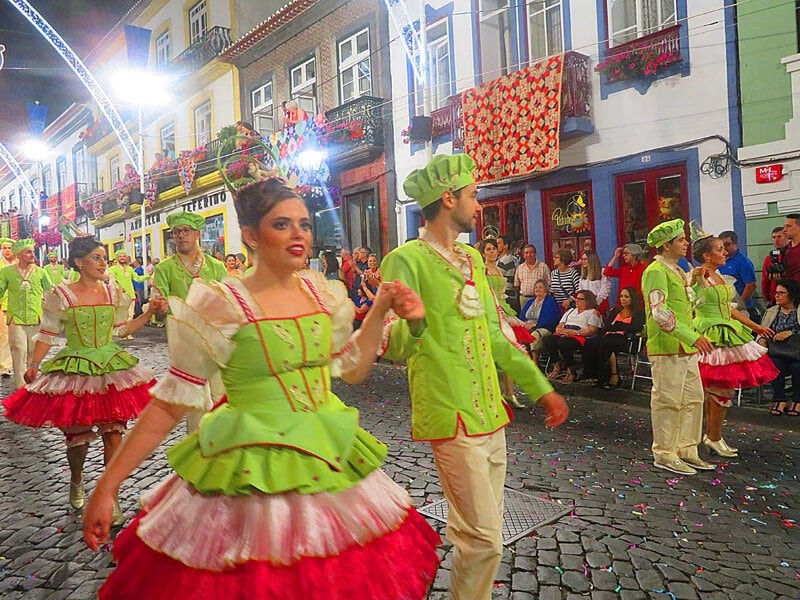 More information
More information 